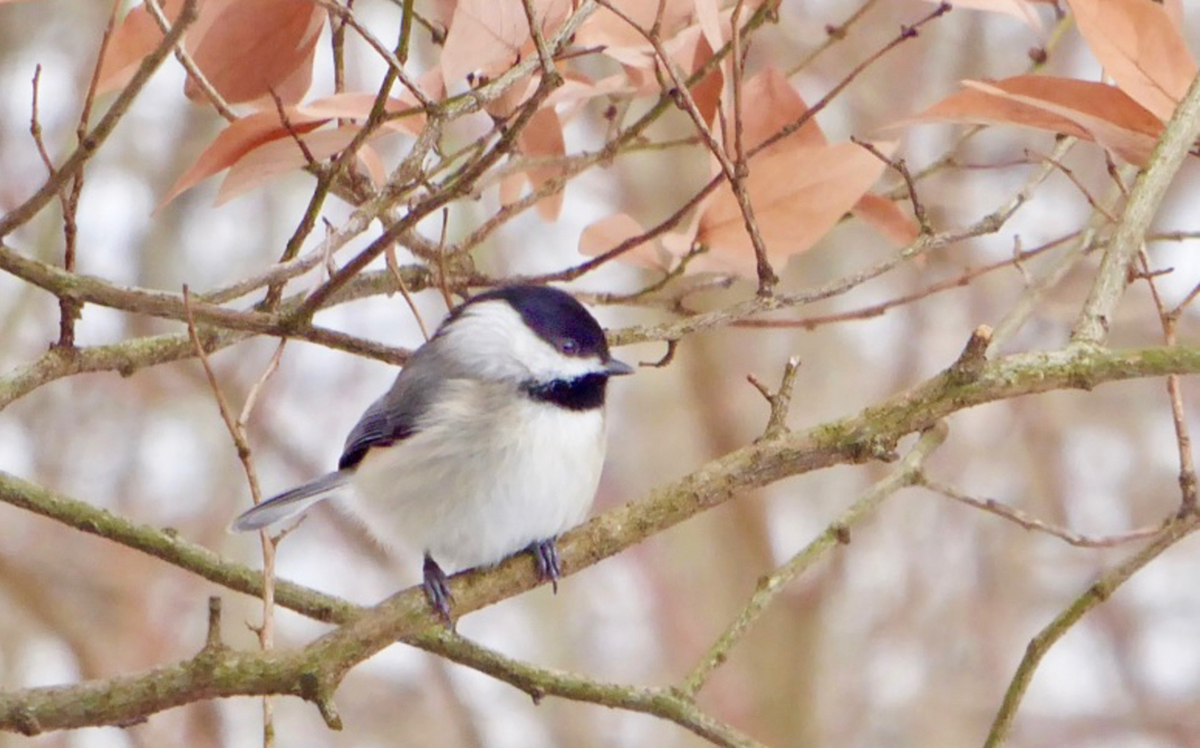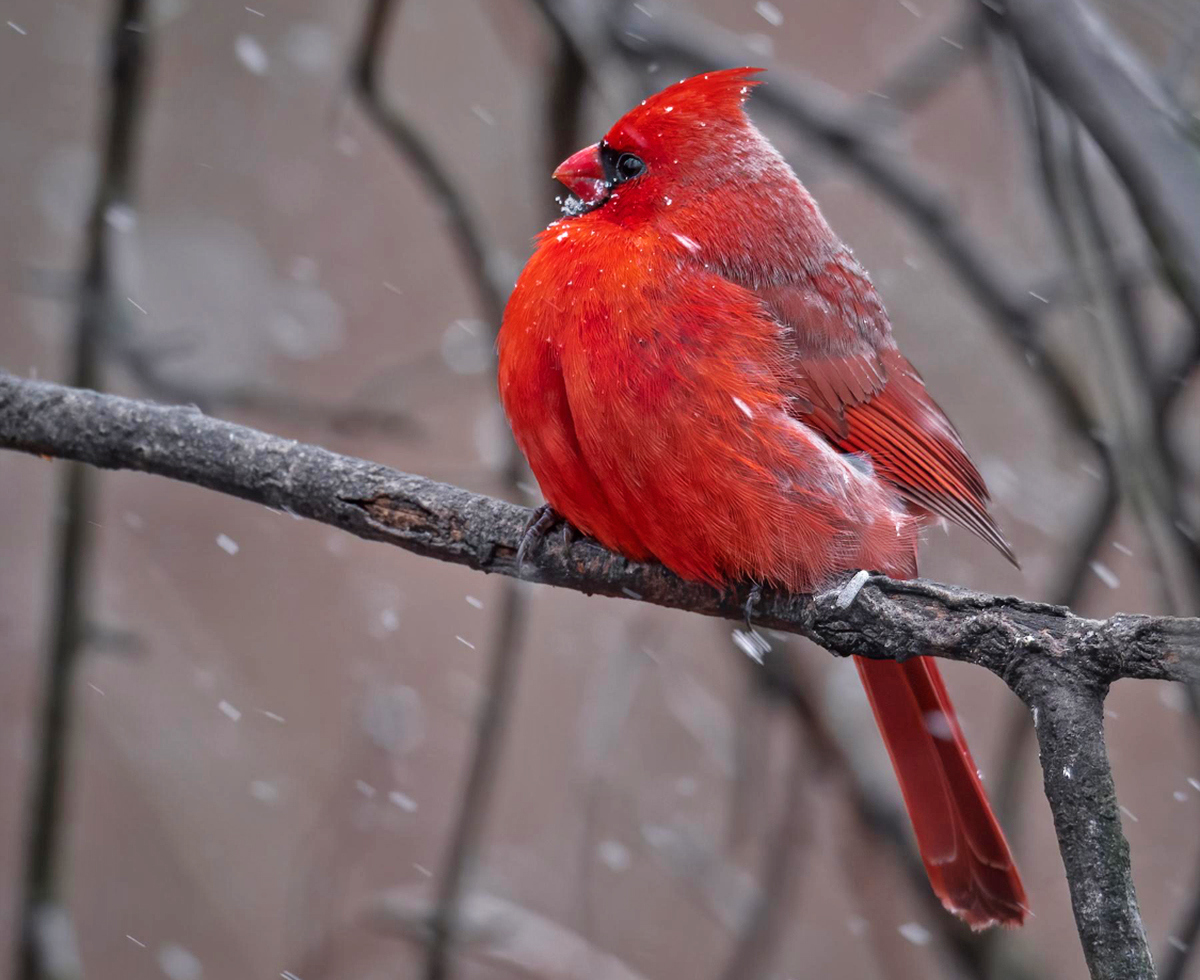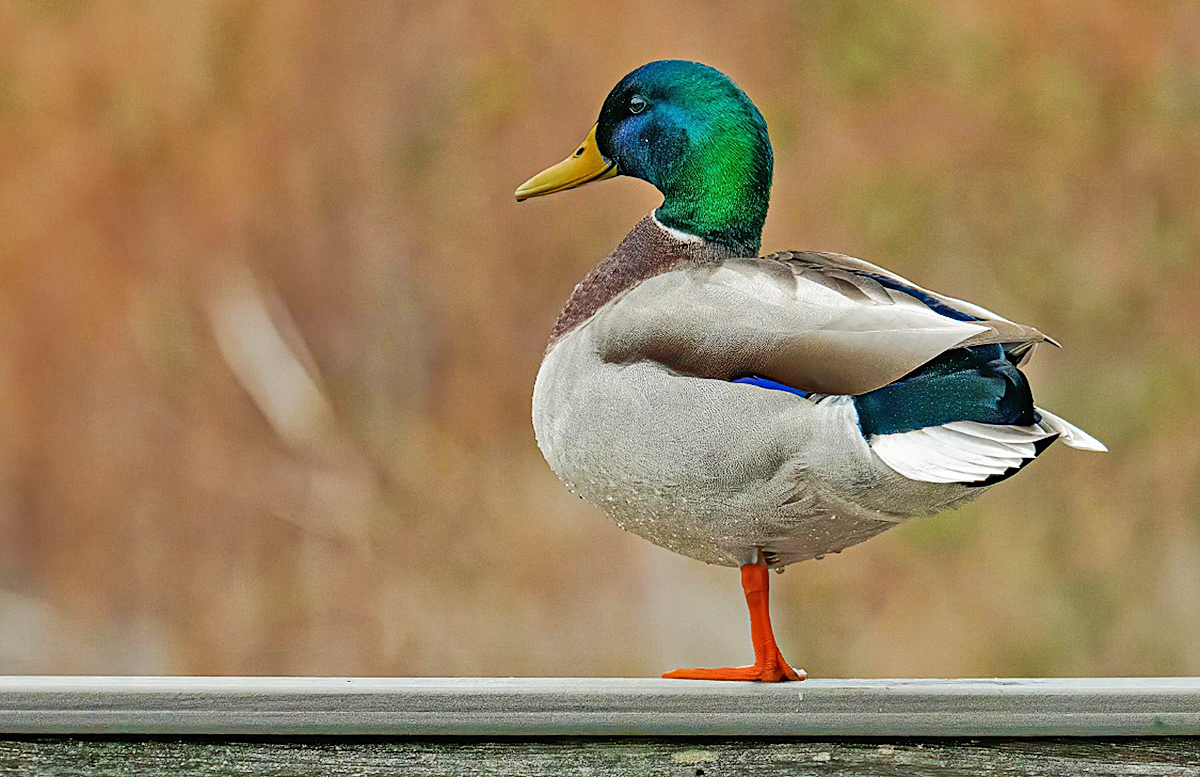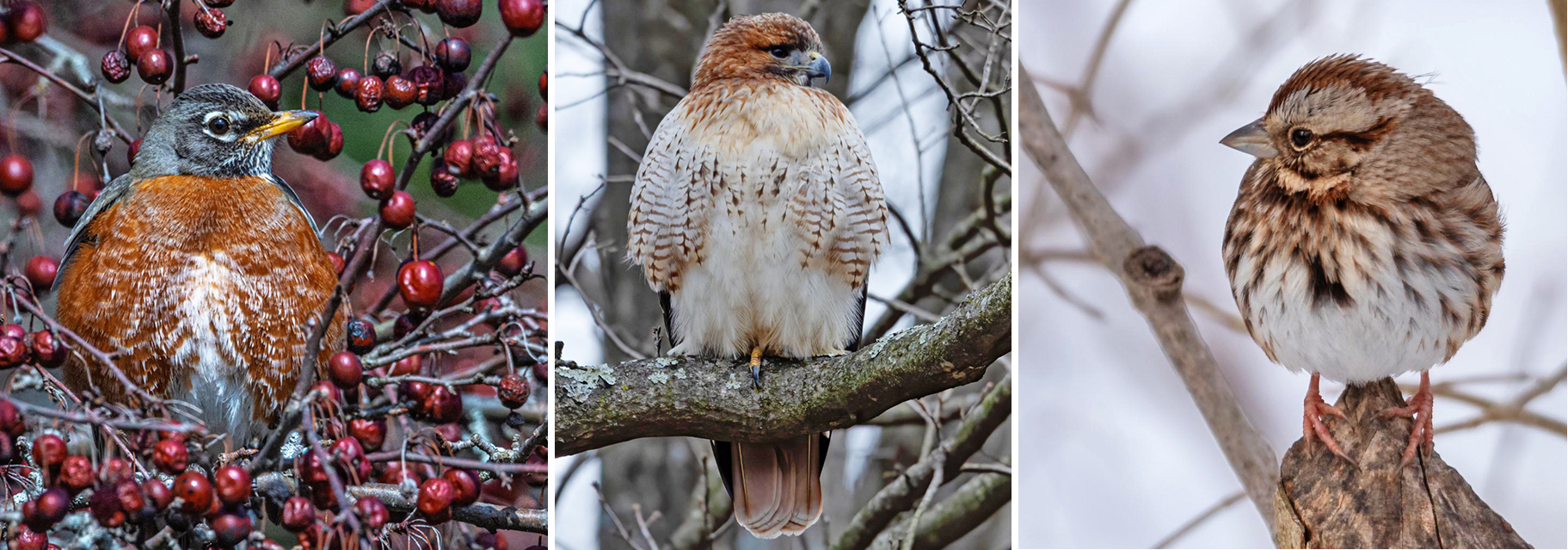STEPHANIE WEST
Blendon Woods Naturalist

‘Tis the season when we crave a crackling fire, cozy blanket, fluffy sweater and a hot drink to make us feel warm inside and out. And that’s after our homes are climate controlled to a comfortable 68℉ (or 78, if you are my dad)! How in the world does wildlife manage to survive frigid outdoor temperatures without central heating, much less a Starbucks drive thru?
While some birds obviously have no interest in experiencing an Ohio winter and head for the tropics, many others, some of them tiny little sprites only one-third of an ounce, tough it out when the temperatures drop well below freezing. But those delicate looking chickadees at your feeder have a few tricks up their, er, wings to help them survive.
Most importantly, all are outfitted with a luxurious down coat. There is a reason down is the gold standard for human outdoor comfort. Down feathers are incredible insulators, and birds grow extra in the winter to help keep warm. Chickadees double their body feathers in the winter, increasing to nearly 2,000 feathers from a summer average of 1,100. Fluffing them improves their insulating properties, so that “fat” bluebird, cardinal, or chickadee you saw at your feeder is, no joking, just fluffy! In fact, feathers are such good insulators, that on a warm winter day, a bird’s biggest challenge is cooling off.

Then, like toddlers, they don’t sit still much! Grandpa used to say that cutting firewood warms you twice – first when you split it, and later when you burn it. All that adorable, acrobatic flitting around to find food helps to generate heat for their tiny bodies, which they keep at a comfortable 107℉ during the day. Chickadees are on a constant search for high fat/protein edibles – preferably bugs – under bark and leaves. They eat as much as one-third their weight in food to build a daily fat reserve, then cache any extra they find. One spring I pried a small handful of sunflower seeds out of the holes of a lawn ornament, forgotten or unneeded by the local chickadees. They are actually very good at remembering where they stashed their cache (no airtags needed) as the spatial memory area of their brain actually enlarges in the winter to keep track of their food stores.
When nighttime temperatures drop below chickadee comfort level, these birds have some amazing adaptations for surviving long, dark winter nights. First, finding a comfy, insulated place to spend the frigid night is paramount. An old woodpecker hole is ideal, but evergreens, or another sheltered location helps. Watch for morning birds with a bit of “bedhead” – bent tail feathers from cramming into a tight hole with other birds. But their true superpower is an ability to lower their body temperature by as much as 20 degrees to survive the night. They enter a brief hibernation called torpor, shivering to keep from freezing and burning through all of their body fat overnight. Disclaimer: Sleeping outside is not a recommended diet plan.

No wonder they are so active at the crack of dawn, even (especially!) on the coldest winter days – they need to rebuild their fat layer for the next night. But what about those tiny toes? If ever a critter appeared to need wool socks, birds would top the list. Bird feet are mostly tendon and bone, so there is very little water in the tissue to get frostbitten. They also have a special countercurrent circulatory arrangement in their feet to avoid radiating body heat from their extremities. Blood vessels running to and from the feet lie right next to each other. Cold blood flowing back to the body from the feet is warmed by the blood flowing into the feet. And if their feet get too cold, they pop them up under those fabulous insulating feathers. Watch for ducks and geese practicing yoga tree pose during the winter to keep their big webbed feet warm! So, do birds get cold feet? Certainly, but it’s hard to say if it bothers them. Studies of snow bunting and eider duck feet have revealed very few pain nerves.
Nature has provided birds with everything they need to survive, otherwise birds would disappear in the winter. On the contrary, at least 70 bird species are commonly seen in central Ohio during the winter. Some even migrate here from further north to enjoy our balmy weather. Winter in Canada makes Ohio look mild and pleasant!

A final note on winter bird survival – if you like feeding the birds, please continue to do so for your personal enjoyment! But many studies have found (counterintuitively) that human provisioning does not affect winter survival until the temperatures drop to the -0 range, a rare occurrence in Ohio. Wild birds simply prefer to seek out a wide variety of wild food. Letting your feeder run empty will not starve the locals. However, you can play a crucial role in survival of those same birds by eliminating pesticide use and planting more native plants in your yard, ensuring a natural, year-round food source – a topic for a different blog!

Thank you for this wonderful article! I often wondered about those little birdies in the cold! Now I know. Thank you!
This was very informative! Thank you! Now I know how they can survive the cold!